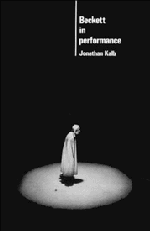Book contents
2 - Rockaby and the art of inadvertent interpretation
Published online by Cambridge University Press: 01 June 2011
Summary
Eclipsed among the millions of critical words that have been lavished on Samuel Beckett is an uncomfortable and frequently avoided question: on what level can spectators be expected to understand his theater? Some critics, with limited success, have tried to address this issue by pointing out parallels between the dilemmas of Beckett's characters and those of his audiences, but I want to shift the field of inquiry by discussing affinities between the actor's process of creating characters in rehearsal and the spectator's process of apprehending plays in performance. I focus predominantly on Rockaby, because Billie Whitelaw's extraordinary performance is well documented and also because there is an important article by Charles Lyons about the process of perceiving this play. Lyons' essay, which has application to Beckett's other works as well, is to my knowledge unique in its detail concerning perception, yet strangely it does not mention Whitelaw at all, despite the fact that her kind of acting figures hugely in the process described.
In Rockaby a woman, dressed in black and “Prematurely old,” sits in a rocking chair alone on a dark stage. Though her feet do not touch the floor, the chair rocks on its own to the soothing regular rhythm of tape-recorded lines spoken in the woman's voice. As the play opens she says “More,” and the rocking begins, seemingly in response to her word.
- Type
- Chapter
- Information
- Beckett in Performance , pp. 9 - 23Publisher: Cambridge University PressPrint publication year: 1989



